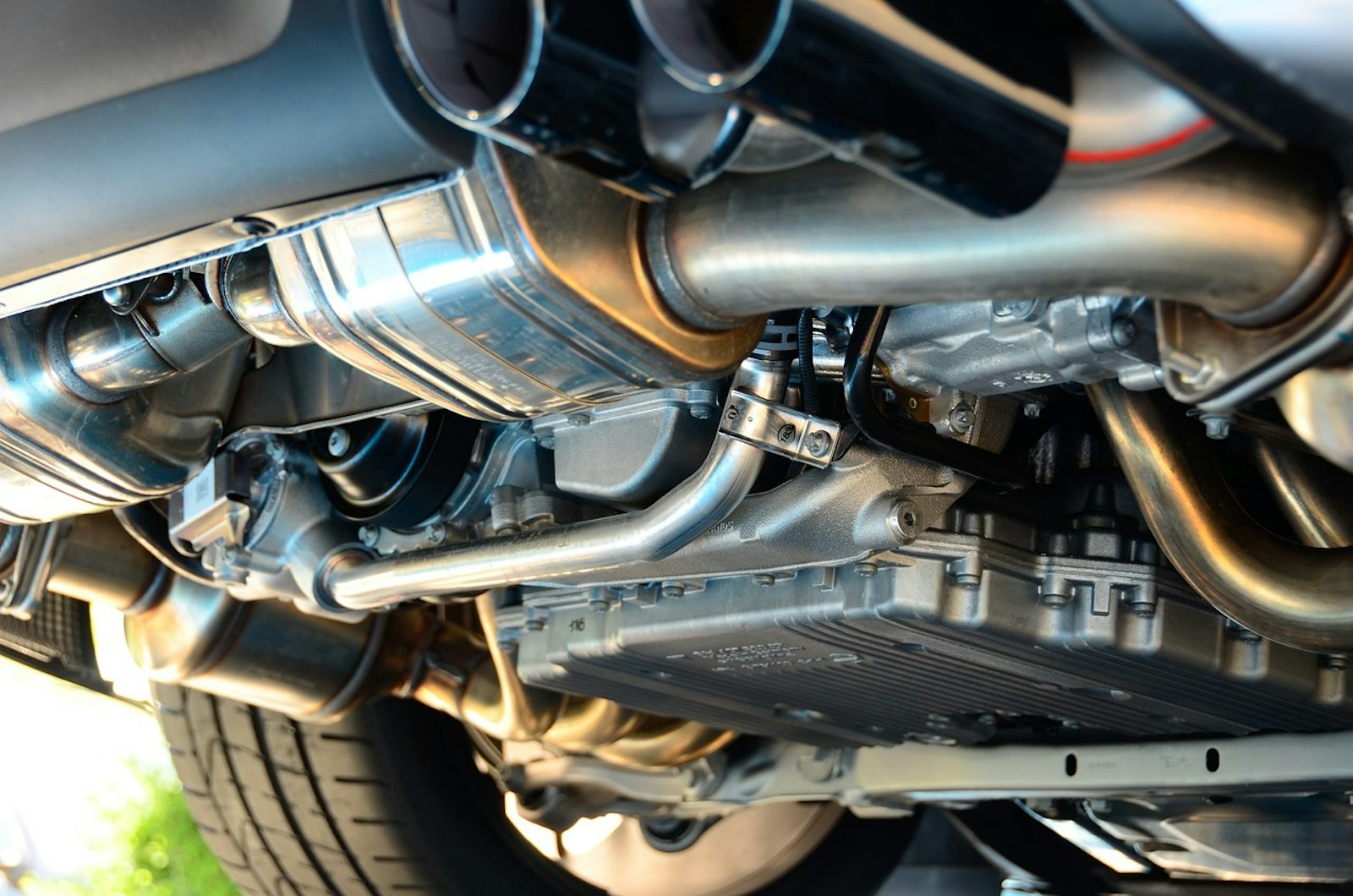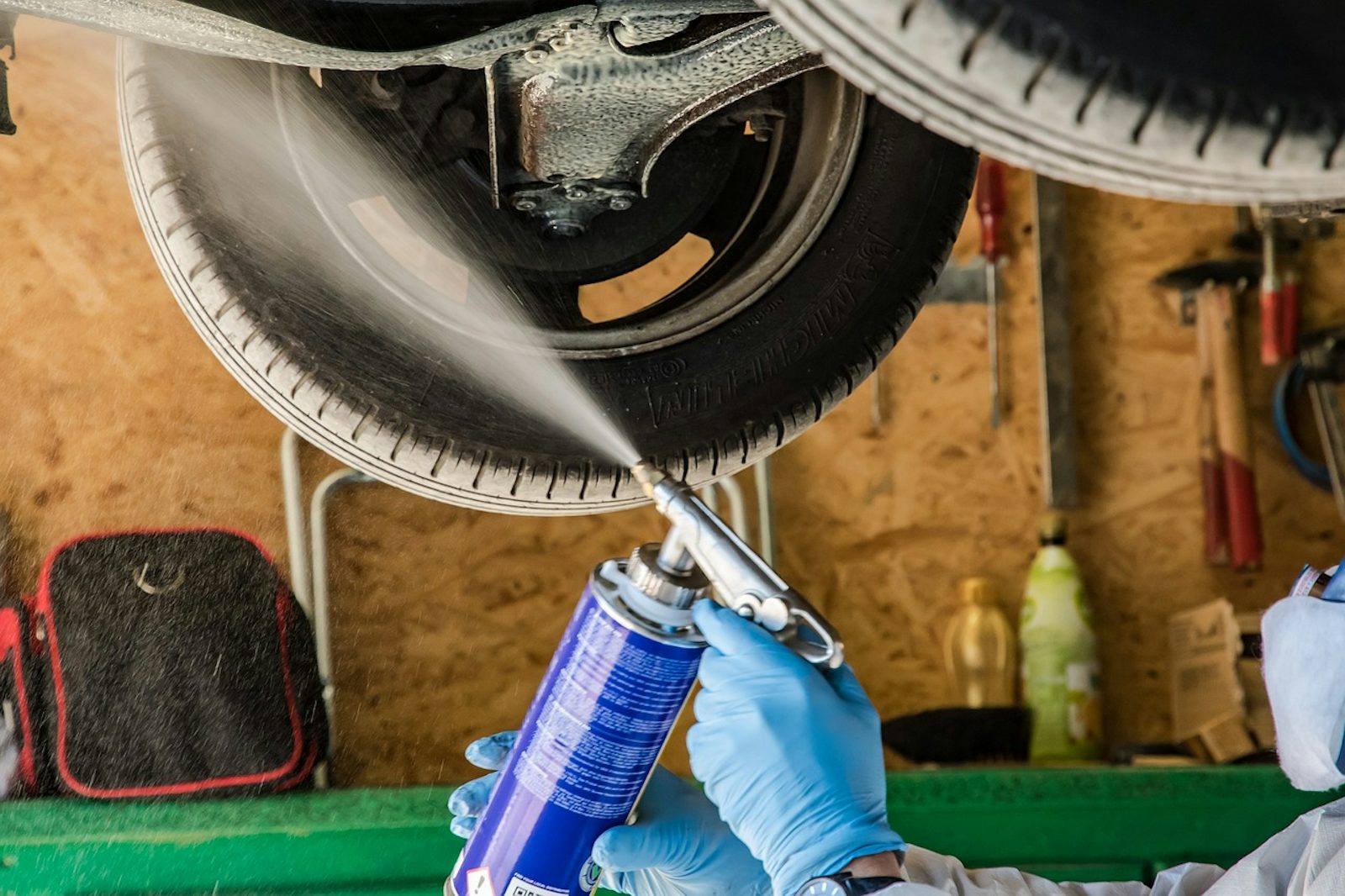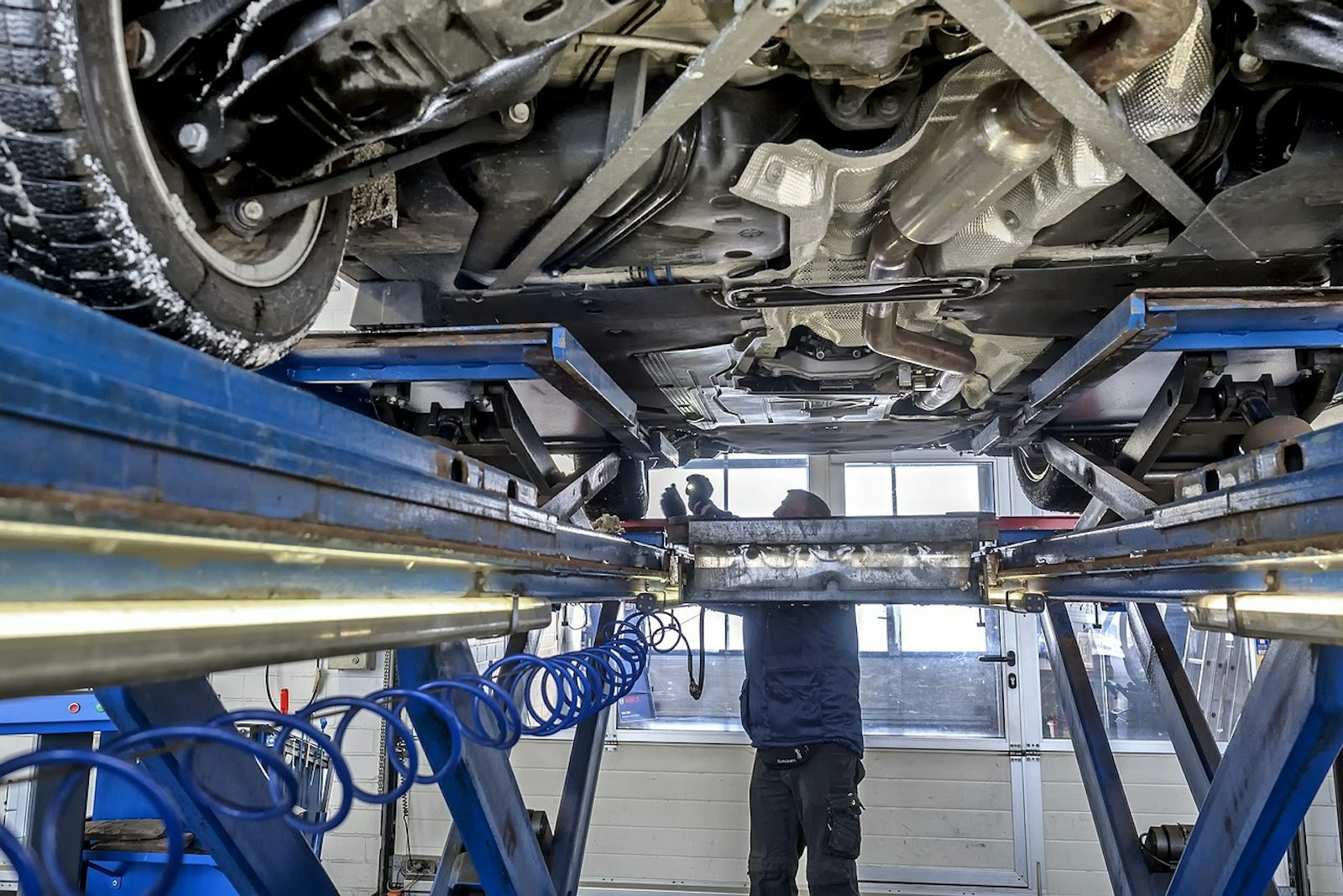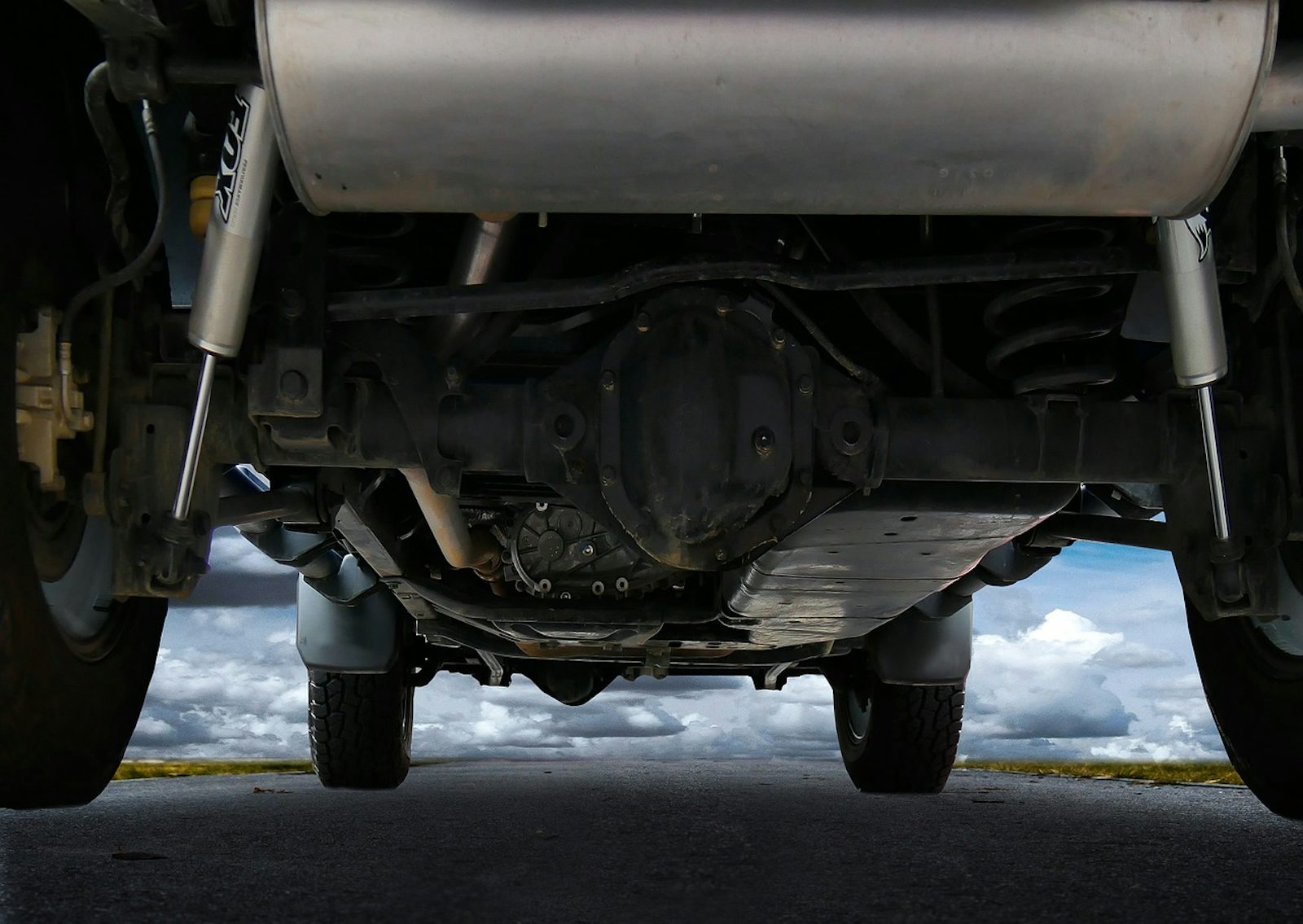The underbody of a car gets water, dirt and road salt. Accordingly, underbody protection is important to prevent rust formation and keep the car in good condition. We have all the information on the subject of underbody sealing.
What is underbody protection for cars?
Underbody protection protects the underbody of the car by applying a protective layer. This protects the open underbody from environmental influences, rust formation and other damage such as stone chips. There are various ways to protect your vehicle - from underbody protection wax to underbody protection spray. We will have more information about this in a later section.

What do I protect my underbody on the car from?
Car care is important. Especially in winter, the car has to put up with a lot, because cold, snow and, above all, road salt attack the underbody. Since you don't put your car on a lifting platform all the time, you will usually rarely see the underbody of the car.
But that is exactly what can become a problem. Rust or damage go unnoticed for a long time and can ultimately lead to expensive repairs. In addition, if the underbody is rusty, you will fail the general inspection and not get a new TÜV sticker. It is therefore important to renew the underbody protection regularly.
Underbody sealing or underbody protection, what's the difference?
There are two ways to protect the underbody: apply underbody protection or cavity sealing.
Underbody protection:
In this variant, a paste-like protective agent, often containing bituemn, is applied or sprayed onto the underbody parts. This layer then protects the subsoil from environmental influences and stone splinters. However, the protection does not last forever and dries out after a few years.
Cavity sealing:
In the past, cavity sealing has already been carried out by the manufacturer on new cars. However, the austerity measures of recent years have also had an impact on this. More and more often, protection is being cut, which also leads to rust formation in cavities in models from premium manufacturers. During sealing, a rust inhibitor is applied to the cavities of the chassis and body to make the corresponding areas waterproof.

What is the best underbody protection?
If you decide to renew the underbody protection, you can choose between different versions. The best known are wax, synthetic resin and bitumen-based agents.
Underbody Protection Spray
Sprays are easy to apply for everyone. Usually, a product made of bitumen or synthetic resin is offered in spray cans, but wax is also available for spraying.
Underbody Protection Wax
A wax layer on the underbody does not harden completely, but remains flexible in a certain way. This allows the protective layer to adjust to the outside temperature. Wax has a high creeping ability, so it effectively protects against moisture in corners. It is easy to apply and has a good layer thickness.
One disadvantage is that the protection against mechanical influences is not optimal due to the incomplete curing. Wax is therefore advisable if you drive mainly on paved roads. As for the color of the agent – wax is transparent.
Underbody protection made of bitumen
If you choose a bitumen-based agent, then you have an advantage, especially when it comes to mechanical influences such as stone chips. Driving on rather unpaved roads should then not cause any problems.
The disadvantage of bitumen, however, is that the layer becomes cracked over time. The protection against moisture is therefore not optimal with this underbody protection. Water may penetrate the cracks and rust may occur.
However, you should know that bitumen is a petroleum product, which is not optimal for the environment. The protective agent is therefore not transparent.

Car underbody protection – workshop or do it yourself?
Applying underbody protection is not difficult – as long as there are no problems with rust. That's why you can also do this work as a layman. Nevertheless, you should obtain information in advance about which parts you can spray and which you cannot.
But because you have to work under the car, a pit or lifting platform is necessary. If you don't have something like that, a visit to the workshop is probably necessary.
Specialist workshop for underbody protection – What costs can I expect?
Applying underbody protection is not particularly difficult, but it is time-consuming. Accordingly, this work in a workshop costs approximately between 200 and 300 euros. If you also have a cavity sealant carried out, something else comes on top.
It is best to get several offers in advance and then decide on the right workshop.
How often should I replace the underbody protection?
Depending on how much stress the vehicle is subjected to, for example by driving in winter or off-road, it is advisable to renew the underbody protection every 6 to 8 years at the latest. You should regularly check whether there is any damage to the underbody - then earlier action is necessary.
The same applies, for example, to a ceramic sealant of the car.
Instructions: Make your own underbody protection
If you want to apply the underbody protection to your car yourself, we have instructions for you here:
1. Remove
rust Before you can apply the protection, rust spots must be removed. If you simply brush the underbody protection over it, the areas underneath will continue to rust. Once the rust is removed, wash everything thoroughly and let it dry.
2. Don't forget
to mask tape off all areas that should not come into contact with the protection (more on this in point 4). You can use newspaper for this.
3. Apply the protective layer
You have the choice between sprays or a brushing agent. A spray is easier to handle if you work with a cartridge and brush, but you will be more thorough and achieve higher protection.
Apply the protective layer evenly.
4. Apply to the right parts
Important: You should only apply underbody protection to areas with immovable parts. Areas that become hot while driving must also not be sprayed with underbody protection. These include brake lines and cables, clutches, engine, catalytic converter, brake discs, rims, cables, silencers and wheel bearings.
4. Let it dry
Once everything has been applied, the subfloor must dry for at least 20 minutes. To do this, park your car in a sheltered place, preferably in a garage.
Underbody protection on rust? Better to remove it first!
In order for the underbody protection to really do its job and protect the vehicle, a certain amount of preparatory work must be done. If rust has already formed, it must be removed first. You can use a putty knife and brush, but this will only loosen superficial rust. If the rust is deeper, rust converter is recommended. Apply this to the appropriate areas with the brush and simply wipe off the lubricating film after an exposure time.

Do you have to remove old underbody protection?
If the underbody protection is old, it may be that moisture has already run between the agent and the sheet metal. If you simply paint a new protective layer over it, there is a possibility that rust will form under the old protection. Therefore, the old protective layer must be removed before renewing the underbody protection.
Unfortunately, this is relatively time-consuming and if you have it done in the workshop, it is also relatively expensive.
Which areas do not tolerate underbody protection?
As already mentioned, moving parts of the underbody and places that get hot while driving must not come into contact with underbody protection.
Underbody protection for caravans & motorhomes
As with a car, the underbody of a motorhome or caravan is also exposed to the weather and should be protected. Only use products that have been approved by the manufacturer. In addition, the underbody of a motorhome is usually made of different materials and two assemblies - a metal chassis and a floor plate made of wood or fiberglass-reinforced plastic.
These materials must be treated differently.
Underbody washing in the car wash – a substitute for proper underbody protection?
No, an underbody wash in the car wash only removes dirt and salt and helps to keep the underbody rust-free in the best case - but this is not a substitute for wax or coating.
After an underbody wash, the underbody surface is exposed to salt or dirt again, so washing is only a short-term measure.

